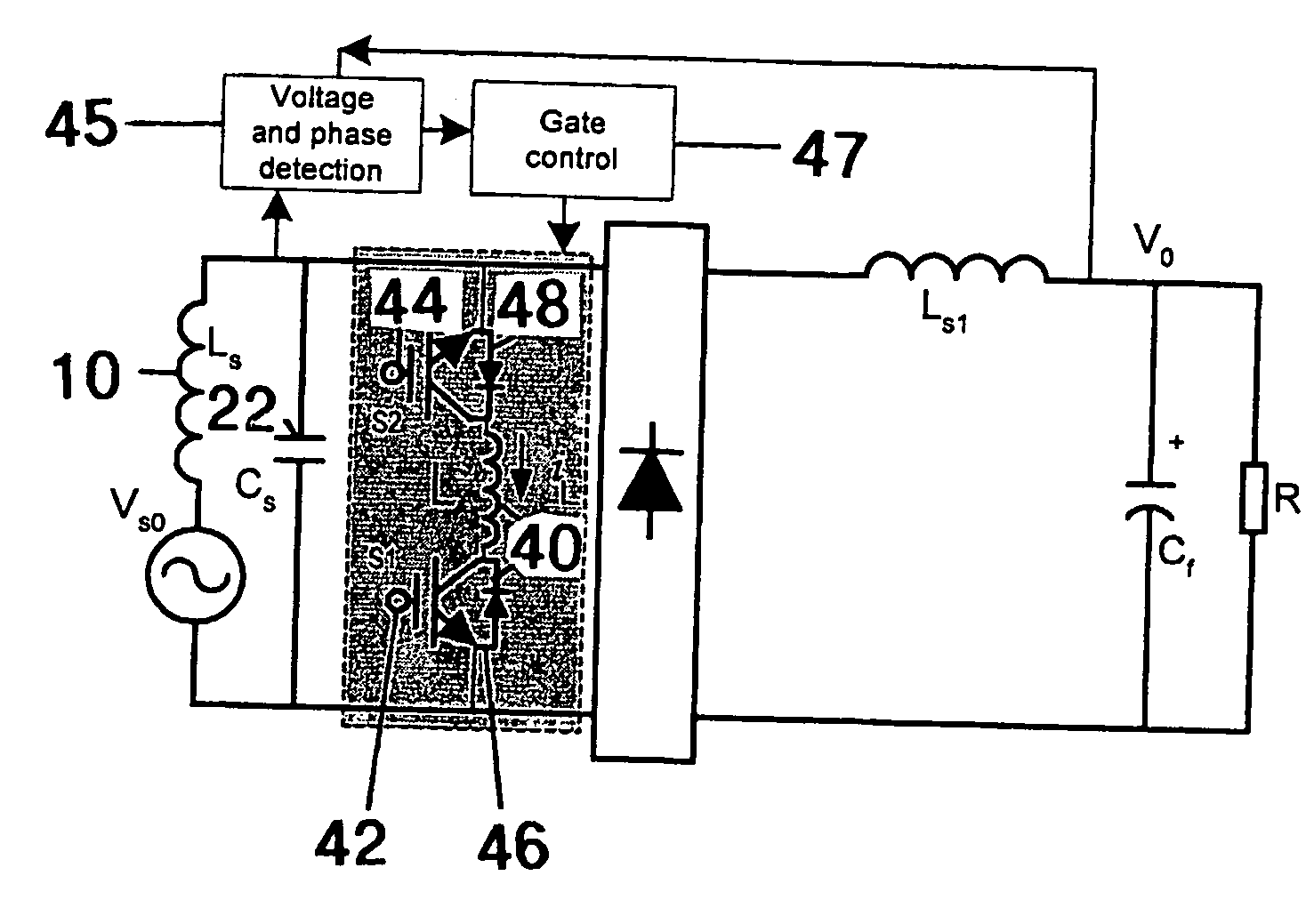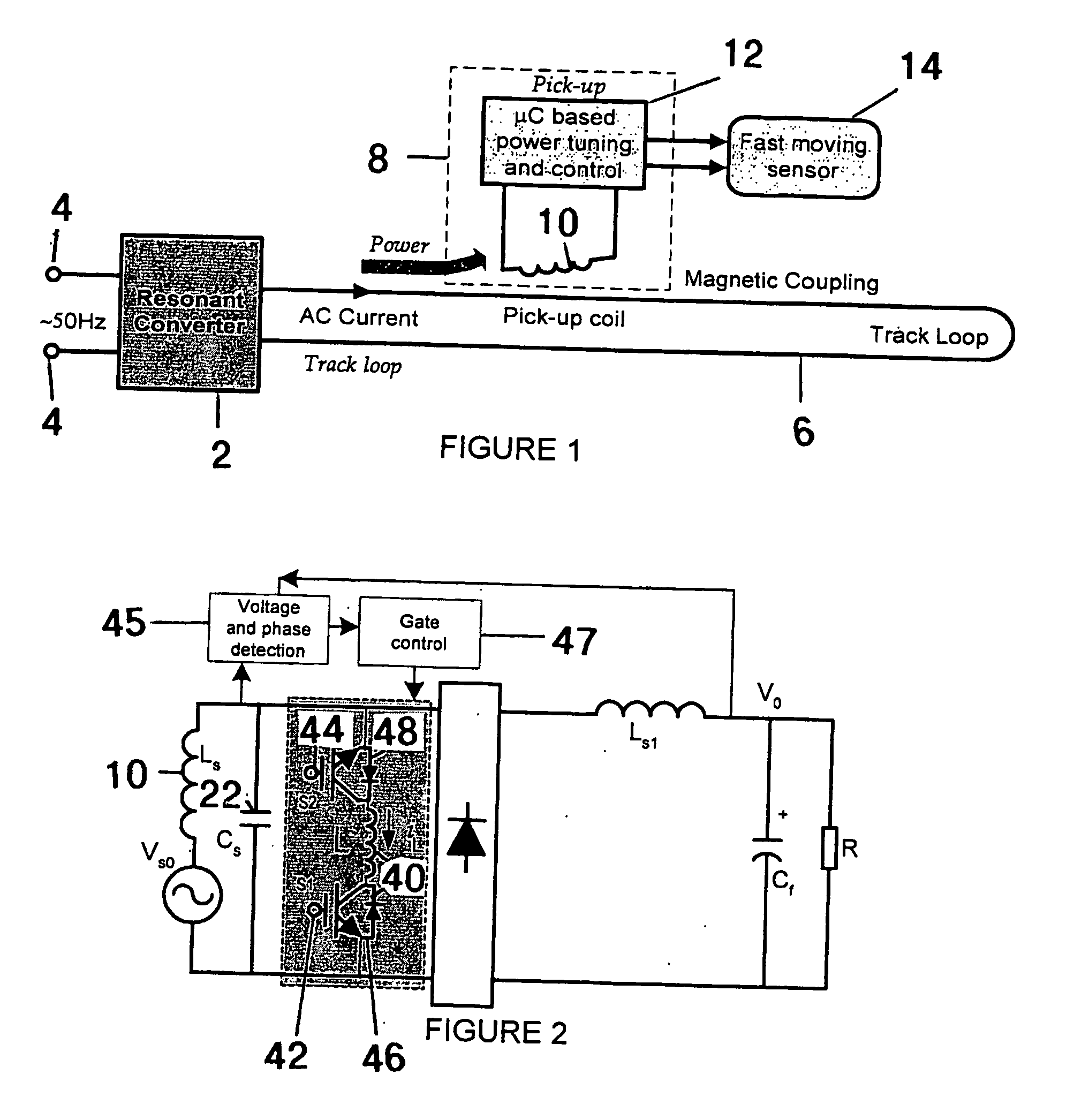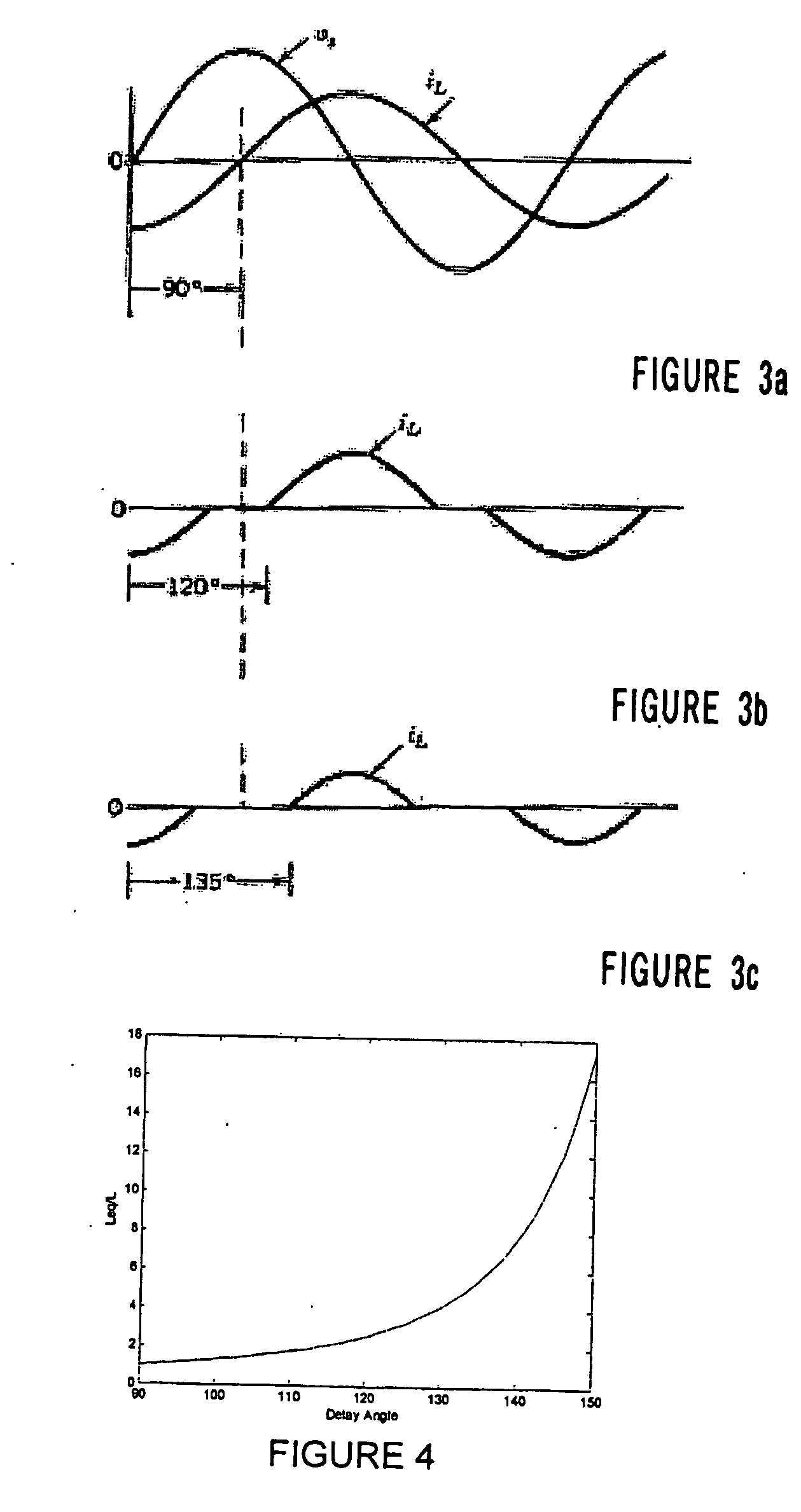Methods and apparatus for control of inductively coupled power transfer systems
a technology of inductive coupling and power transfer system, which is applied in the direction of dc network circuit arrangement, emergency protection circuit arrangement, energy industry, etc., can solve the problems of large conduction loss, control of power transferred to pick-ups, and variation in the frequency of current in the primary path
- Summary
- Abstract
- Description
- Claims
- Application Information
AI Technical Summary
Benefits of technology
Problems solved by technology
Method used
Image
Examples
Embodiment Construction
[0047] Referring to FIG. 1, the basic structure of an ICPT power supply (also known as a contactless power supply) system is shown. The system generally comprises two electrically isolated parts. The first part consists of a power supply such as a resonant converter 2 which has inputs 4) for connection to a source of electrical energy, in this example the inputs 4 may be connected to a 50 Hertz mains supply. The first part also includes a primary conductive path 6 which is supplied with alternating current from the resonant converter 2. The primary conductive path 6 is usually in the form of an elongated “track” along which one or more of the second parts are located. In this example, the main function of the converter is to supply a nominally constant high frequency AC current of about 20 amps rms at 40 kHz with a sinusoidal waveform in the track loop.
[0048] The second part consists of one or more pick-ups 8, each of which includes a pick-up conductive element which is usually in ...
PUM
| Property | Measurement | Unit |
|---|---|---|
| Time | aaaaa | aaaaa |
| Electrical conductivity | aaaaa | aaaaa |
| Power | aaaaa | aaaaa |
Abstract
Description
Claims
Application Information
 Login to View More
Login to View More - R&D
- Intellectual Property
- Life Sciences
- Materials
- Tech Scout
- Unparalleled Data Quality
- Higher Quality Content
- 60% Fewer Hallucinations
Browse by: Latest US Patents, China's latest patents, Technical Efficacy Thesaurus, Application Domain, Technology Topic, Popular Technical Reports.
© 2025 PatSnap. All rights reserved.Legal|Privacy policy|Modern Slavery Act Transparency Statement|Sitemap|About US| Contact US: help@patsnap.com



